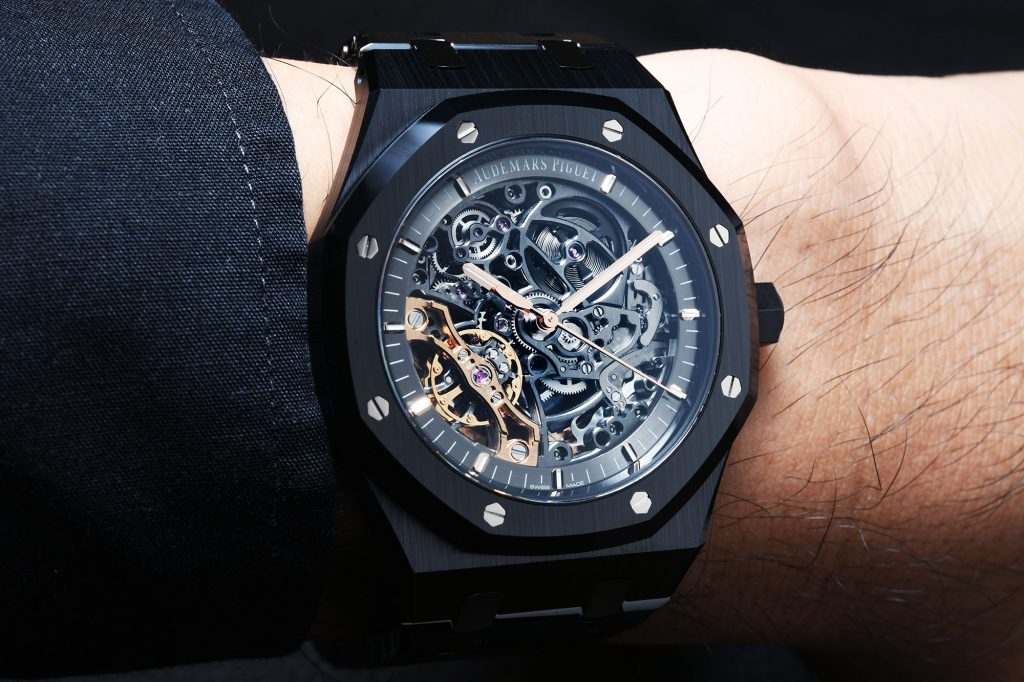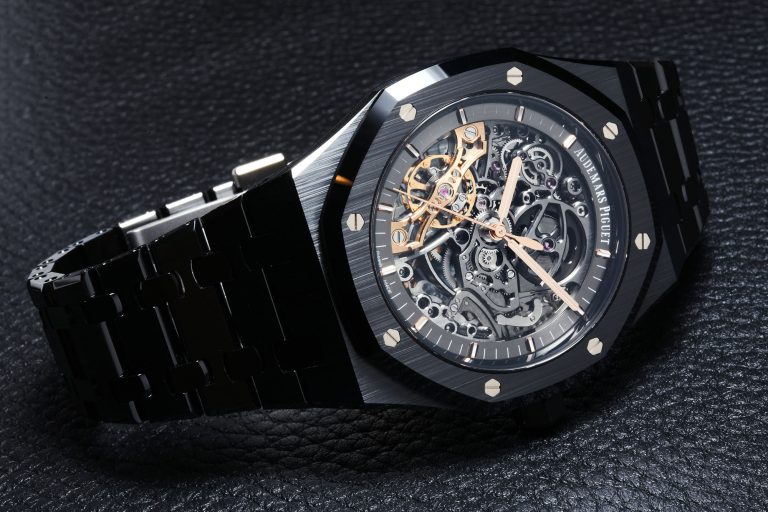The Royal Oak – a watch whose reputation proceeds itself, and its fame in the watch world knows nearly no bounds. Designed by the esteemed Gerald Genta and introduced in 1976, the Royal Oak revitalised Audemars Piguet, and breathed new life into the industry as the first luxury sports watch entirely crafted in stainless steel. Since that time, the Royal Oak has seen countless variations, including tourbillon, chronograph and perpetual calendar versions, and in more recent times, skeletonised versions. Being the oldest watchmaker still in the hands of the founding families, Audemars Piguet regularly demonstrate their prowess in the art of watchmaking.
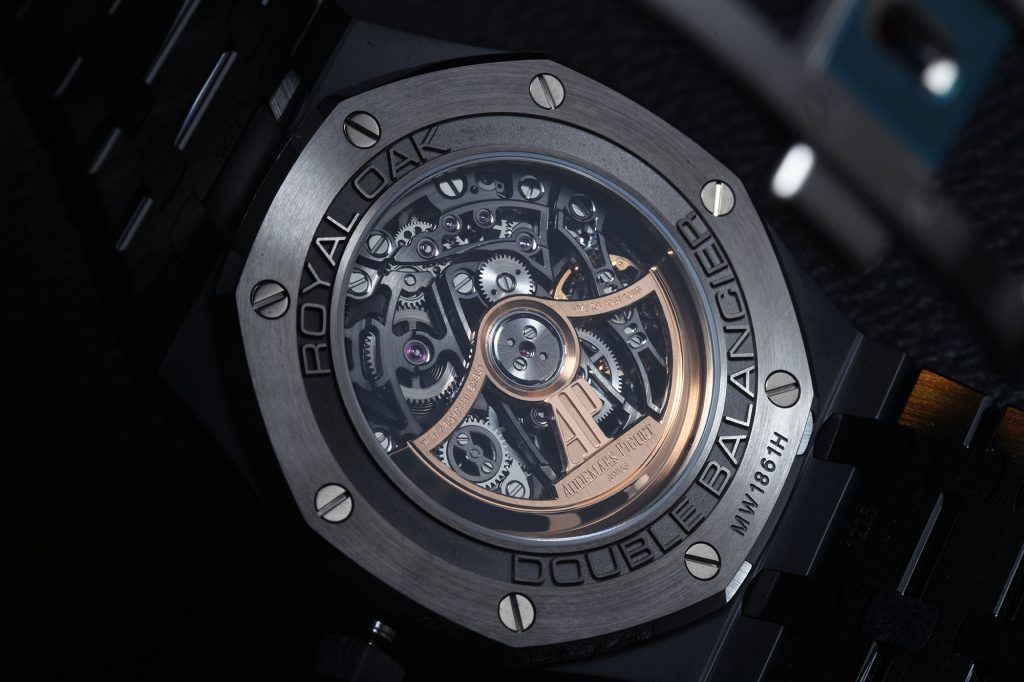
Through the new release of the Royal Oak Double Balance Wheel Openworked in Black Ceramic, the brand demonstrates its knowledge of materials and skeletonisation – and beyond all of the hype surrounding Audemars Piguet and its Royal Oak line of watches, this new release manages to fuse tradition and modernity in one package, offering for the first time, the brand’s signature case and bracelet design in ceramic, with their Double Balance Wheel as well in the mix, making an everyday wearing watch that is scratch resistant and super cool.
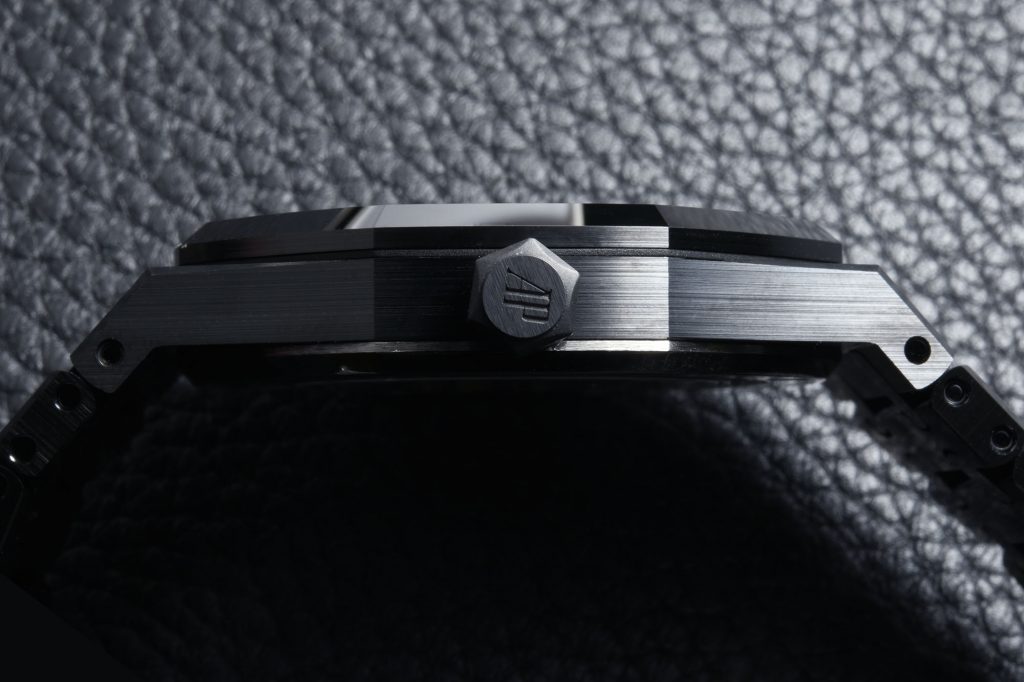
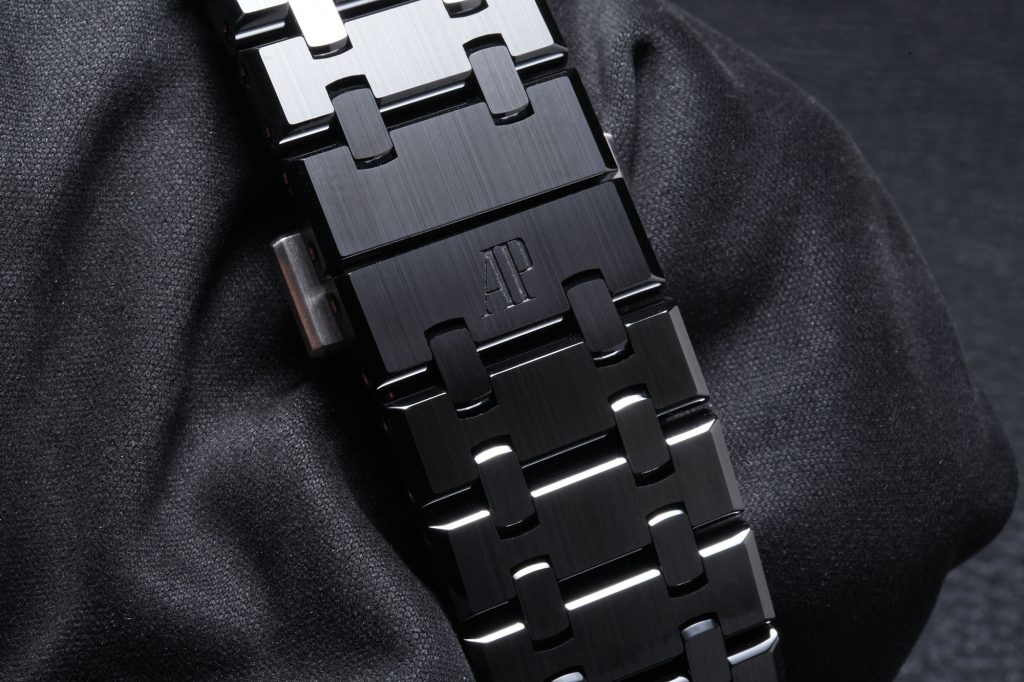
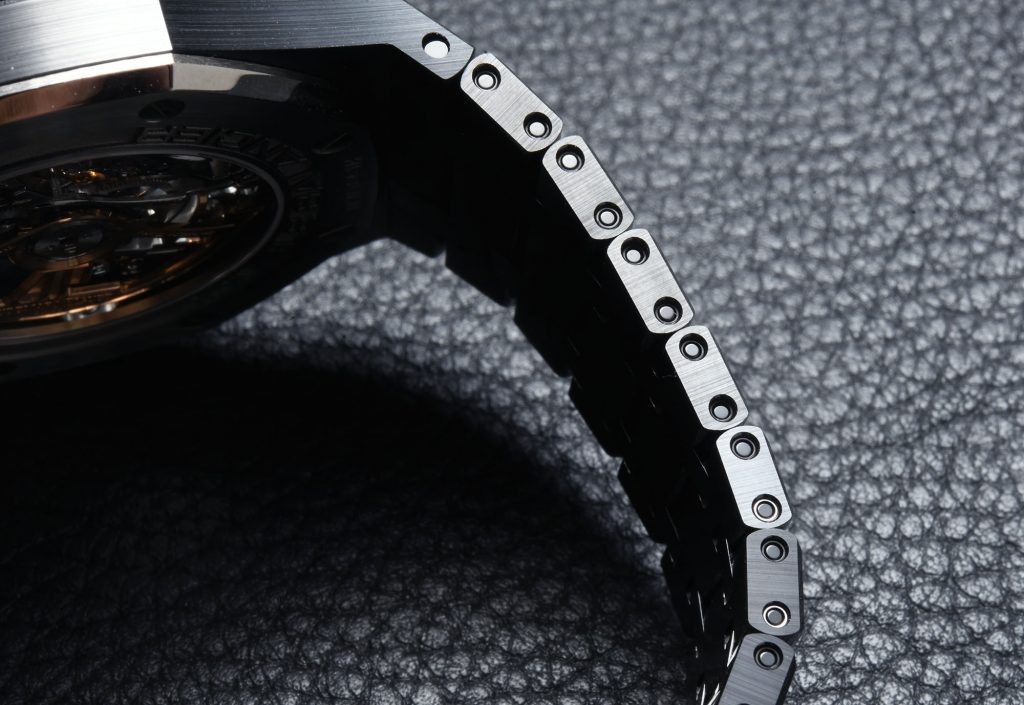
We begin with the famous octagonal case for which the Royal Oak is renowned for. Inspired by the portholes of a ship, the watch is slightly larger than the model of its genesis, measuring at a modern 41mm. Even though the watch is executed in black ceramic, there still has been an enormous amount of attention paid to the finishing of the case and its integrated bracelet.
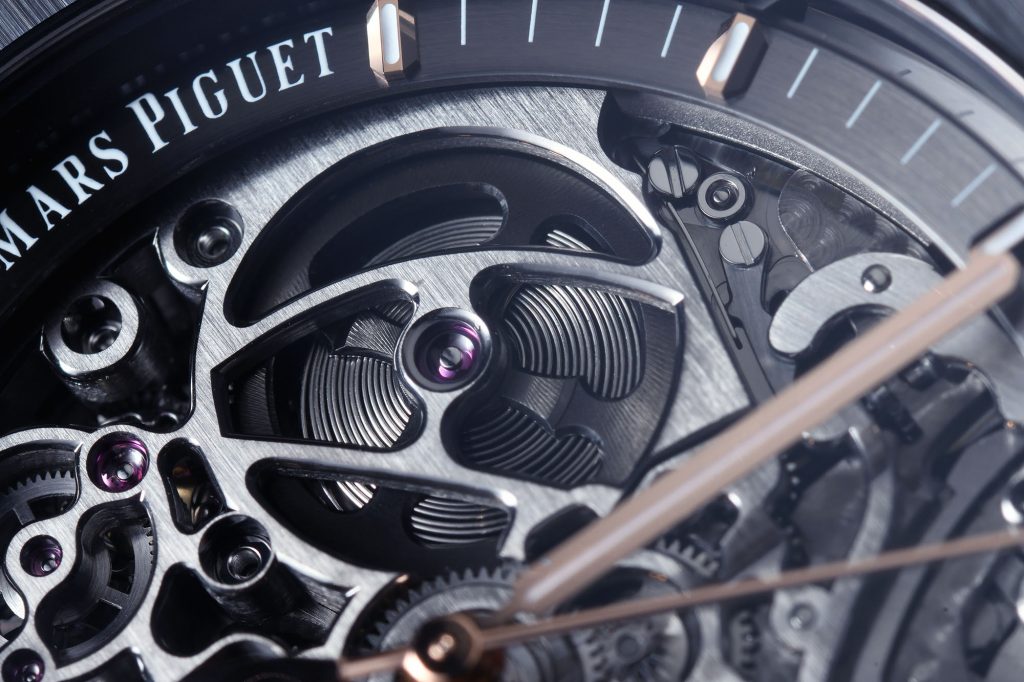
There is vertical satin brushing on the flat surfaces, and chamfering on the edges – it really is a wonder how Audemars Piguet manage to finish ceramic (which is virtually unscratchable) in such a fashion befitting haute horlogerie. Its bracelet manages to drape around the wrist like cloth, and is secured by a double butterfly clasp with a push-button mechanism. The hexagonal screw-down crown ensures a 50m water resistance, and features a sapphire crystal caseback to view the exquisite in-house automatic Calibre 3132.
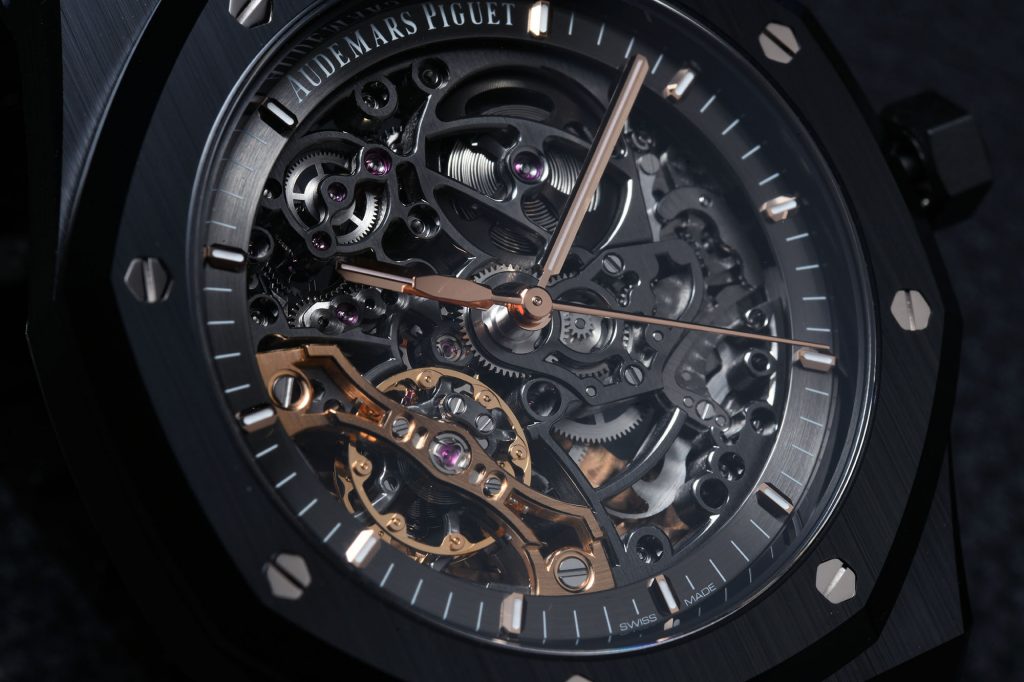
To say the movement is visible through the sapphire glass is a real understatement. Skeletonisation remains a core competency at Audemars Piguet, having practised the craft since the 1930s. The art of skeletonisation involves selecting a movement and designing its appearance first, before the craftsperson begins to cut away at the bridges and plates of the movement to reveal the wheels, pinions, levers and springs within. This process can be a double-edged sword – cut too little away, and you risk the watch not being aesthetically pleasing – cut too much away, and you risk the structural integrity of the movement, making it extremely fragile.
In addition to this, the movement must also be finished, and in the case of Audemars Piguet, it goes without saying that all components are finished excellently. A watchmaker once told me that in order to discern fine finishing of a movement component, one must seek out sharp internal angles – that is, acute angles that are polished to a sharp shape. This is featured most prominently on the gold bridge holding the two balance wheels, where the angles near the jewel bearing and near peripheral screw holes do we find examples of this internal-angle hand chamfering. Not to mention its vertical brushed flat surfaces of the bridges, the perlage on the baseplate, and the circular graining and polished teeth on the wheels.
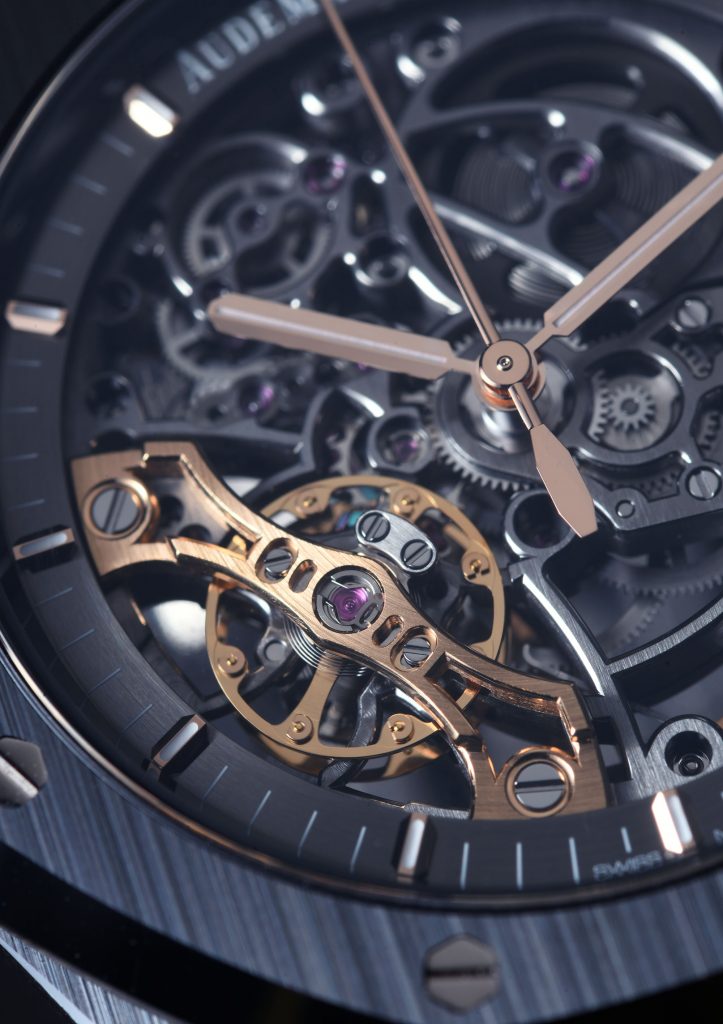
The namesake of this watch also gives away a key feature aiding in everyday chronometric performance – the double balance wheel. In the case of this Royal Oak, the double balance wheels are on the same axis, doubling the moment of inertia of the regulator. Putting aside the physics-speak, this means that it is harder to disturb the oscillations of the regulator, and will keep better time under different positions, as well as resisting the time-altering nature of shocks to the watch.
With the Royal Oak Double Balance Wheel Openworked in Black Ceramic, Audemars Piguet have demonstrated once again that they are able to master the traditional aspects of watchmaking in the Vallee de Joux style, whilst combining the modernity and durability of modern ceramic. The watch goes to show that Audemars Piguet has always had watchmaking at the heart of what it does, and even in its most modern of pieces, will continue to conserve traditional watchmaking in the Vallee.

